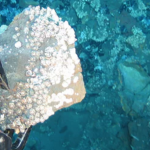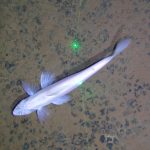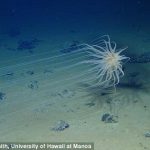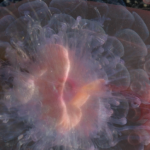Source: Honolulu Civil Beat
Author: Stewart Yerton
Critics fear rules for opening a swath of ocean bed between Mexico and Hawaii won’t protect “the most pristine wilderness on the planet.”
Deep on the floor of the Pacific Ocean, amidst one of earth’s greatest unexploited reserves of valuable minerals, are ecosystems of otherworldly creatures.
There are fast-moving sea urchins; anemones that perch like flowers atop long sponge stalks; translucent, tentacled sea cucumbers that look like something from Pokemon, and yellow gelatinous critters that University of Hawaii oceanographers have nicknamed “Gummy Squirrels.”
Continue reading Rushing To Mine A Sea Floor Full Of Treasure — And Unique Creatures






